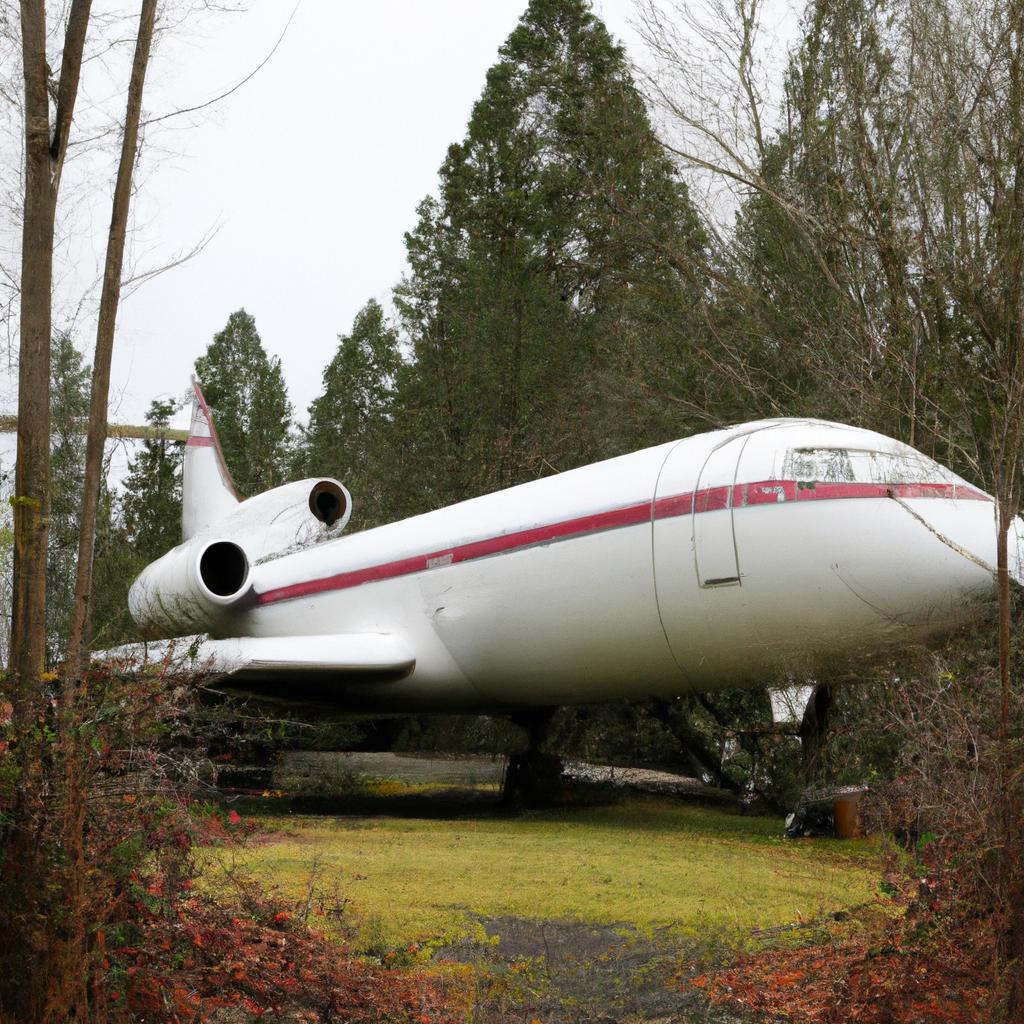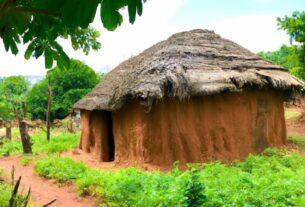Are you tired of the ordinary, mundane housing options? Are you ready to embark on a unique and environmentally friendly adventure? Look no further than a 727 fuselage home!
As the name suggests, a 727 fuselage home is built from the fuselage of a decommissioned Boeing 727 airplane. It might sound eccentric, but it’s gaining popularity as a sustainable and affordable housing option that allows you to express your personality in a remarkable way.
In this article, we’ll dive deep into the captivating world of 727 fuselage homes. From its fascinating history and design process to the advantages and challenges of living in one, we’ll uncover everything you need to know about this ultimate eco-friendly housing option.
The Fascinating History of 727 Fuselage Homes
Have you ever wondered what happens to airplanes when they retire from service? Some might be scrapped or sold for parts, while others find a new life as creative and innovative projects. One such project is the transformation of airplane fuselages into spectacular residential homes.
The concept of using airplane fuselages for residential purposes can be traced back to the 1960s. Urban Space Management, a company in London, began converting decommissioned airplanes into temporary housing for artists and musicians in the Docklands area. These early projects laid the foundation for the modern-day 727 fuselage homes we admire today.
In recent years, 727 fuselage homes have gained immense popularity as a sustainable and unique housing option. Homeowners and builders worldwide have embraced this unconventional approach, repurposing old airplanes into comfortable and functional living spaces. From rural areas to urban centers, these homes have emerged in various locations, with some even serving as vacation rentals or Airbnb properties, offering travelers an extraordinary experience.
Notable Examples of 727 Fuselage Homes
One notable example of a 727 fuselage home is the Phoenix House in Malibu, California. Built in the late 1990s, this stunning home features an open and spacious living area, a master suite, and a guest bedroom. Its sleek and modern interior boasts ample natural light, making it a captivating living space.
Another remarkable example is the Costa Verde Resort in Costa Rica, which offers a fully furnished airplane suite perched on a 50-foot pedestal. With two bedrooms, two bathrooms, a kitchenette, and a terrace with breathtaking ocean views, it provides a one-of-a-kind experience for its lucky inhabitants.
These are just a few instances of the countless 727 fuselage homes that have captured the imagination of homeowners and builders worldwide. With their unique design and eco-friendly construction, it’s no wonder they continue to inspire and fascinate.
Design and Construction of 727 Fuselage Homes
When building a 727 fuselage home, the first step is securing a decommissioned airplane fuselage. Once acquired, the design and construction process can begin, resulting in an exceptional dwelling that stands apart from traditional homes.
Designing a fuselage home requires creativity and innovation. The unique shape and size of the fuselage influence the overall design and layout. The interior must be gutted, with walls, floors, and ceilings reinforced and insulated. Consideration must be given to the placement of windows, doors, and essential utilities such as plumbing and electrical wiring. The layout should optimize natural light and create a comfortable living space.
Once the design is finalized, the construction process begins. Transporting the fuselage to the building site and laying a foundation are the initial steps. The fuselage is then secured to the foundation, ensuring structural integrity. The interior walls, floors, and ceilings are framed and insulated, while plumbing, electrical, and HVAC systems are installed. The exterior can be painted or left with its original finish, enhancing the unique aesthetics.
Building a 727 fuselage home is a complex process that requires the expertise of architects, engineers, and contractors experienced in this specialized construction. With meticulous planning and attention to detail, a truly extraordinary home can be created, marrying sustainability with captivating design.
The Advantages of Living in a 727 Fuselage Home
If you’re considering a 727 fuselage home, you might be curious about the benefits it offers. Here are some advantages of living in one:
Affordability
A 727 fuselage home is an affordable option for homeowners seeking a unique and environmentally friendly dwelling. While costs can vary based on location, size, and amenities, generally, they are cheaper to build than traditional houses.
Sustainability
Choosing a 727 fuselage home is a sustainable decision. Upcycling an old airplane fuselage reduces waste and positively impacts the environment. Moreover, the aerodynamic and insulating properties of the fuselage contribute to an energy-efficient home, promoting a sustainable future.
Durability
Airplanes are designed to endure extreme conditions, including high altitudes, high speeds, and harsh weather. Consequently, a 727 fuselage home benefits from the durable materials used in aircraft construction. Its unique shape and robust structure ensure a safe and secure living environment.
Comfort and Functionality
Despite its unconventional appearance, a 727 fuselage home can offer a comfortable and functional living space. With thoughtful design, the interior can maximize the available space, creatively utilizing the fuselage’s unique shape. Customize your home to include all the amenities you desire, such as a kitchen, bathroom, and bedroom.
In summary, a 727 fuselage home provides affordability, sustainability, durability, and a distinctive living experience. It’s an ideal choice for those seeking a unique and eco-friendly housing option.
Challenges and Considerations for Living in a 727 Fuselage Home
Living in a 727 fuselage home offers an exciting and extraordinary experience. However, it’s essential to be aware of the challenges and considerations that come with it. Here are some key points to keep in mind:
Zoning Regulations
Before embarking on your 727 fuselage home journey, research local zoning regulations. Some areas may have restrictions on unconventional housing options, and permits may be required. Ensure compliance with regulations before commencing construction.
Maintenance
Maintaining a 727 fuselage home can be more demanding compared to a traditional home. The unique shape and materials of the fuselage call for specific maintenance techniques and may present challenges in case of damage. Additionally, the replacement or repair of windows can be more complex.
Insulation
Insulating a 727 fuselage home poses another challenge. The cylindrical shape makes uniform insulation difficult, and the metal exterior conducts heat and cold. Careful consideration of insulation options is crucial to ensure comfort and energy-efficiency.
To make the most of living in a 727 fuselage home, follow these tips and advice:
- Work with experienced professionals who have previous experience with similar projects.
- Research insulation solutions and consult with a professional for the best outcome.
- Regularly inspect and maintain the exterior to preserve its unique features.
- Be creative with your interior design to maximize the unique shape of the fuselage.
By considering these challenges and embracing the tips, you can relish a comfortable and extraordinary living experience in your 727 fuselage home.
In Conclusion
If you’re seeking a unique, eco-friendly, and affordable housing option, a 727 fuselage home might be your dream come true. It offers a remarkable way to express your personality while contributing positively to the environment.
Living in a fuselage home comes with numerous benefits, including affordability, sustainability, durability, and the opportunity to create a comfortable living space tailored to your needs. While there are considerations and challenges to navigate, proper planning and execution can overcome them.
At TooLacks, we’re passionate about sharing exciting and sustainable living ideas. We hope this article has ignited your creativity and expanded your housing options. For more captivating content, visit TooLacks.
Thank you for joining us on this exhilarating journey into the world of 727 fuselage homes. Stay tuned for more invigorating content in the future!


